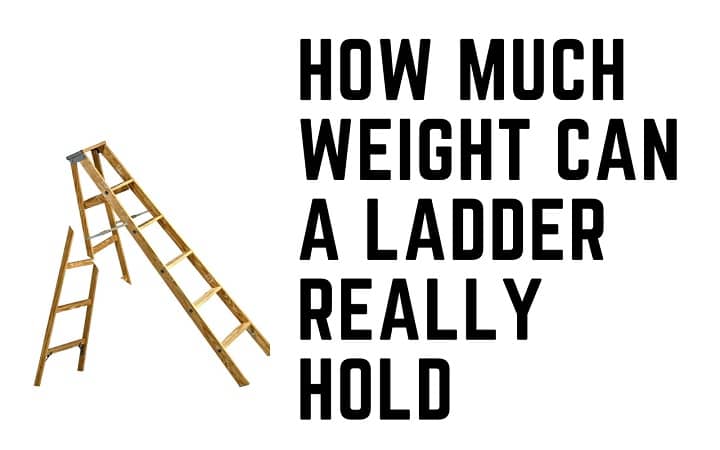Do Telescopic Ladders Have to be Fully Extended?
Telescopic ladders have gained popularity for their convenience, portability, and versatility. They are a space-saving alternative to traditional ladders, often used in various professions and household tasks. One question that arises when using telescopic ladders is whether they have to be fully extended for safe usage. In this article, we will explore the considerations and safety aspects associated with telescopic ladders at different extension lengths.
Telescopic ladders are innovative and adjustable tools that offer a range of benefits for users. They are designed to extend and retract easily, making them compact and easy to transport. With their lightweight construction and ability to adapt to different heights, telescopic ladders have become a popular choice for both professionals and homeowners.
What Are Telescopic Ladders?
Telescopic ladders are ladders that consist of multiple sections, each nested within the other. These sections can slide in and out, allowing the ladder to be extended or retracted as needed. When not in use, telescopic ladders can be collapsed down to a compact size for easy storage and transportation.
The Benefits of Telescopic Ladders
Telescopic ladders offer several advantages over traditional ladders. Some of the key benefits include:
- Portability: Telescopic ladders are lightweight and easy to carry, making them ideal for professionals who need to move between job sites or homeowners who require a ladder for occasional tasks.
- Versatility: These ladders can be adjusted to various heights, allowing users to reach different areas with ease. They are particularly useful in situations where a ladder of fixed height may be too short or too tall.
- Space-saving: Telescopic ladders can be collapsed down to a fraction of their extended height, making them convenient for storage in small spaces such as closets, garages, or vehicles.
- Easy setup: Unlike traditional ladders, telescopic ladders require minimal effort to extend or retract. They usually come with simple locking mechanisms that secure the ladder at the desired height.
Safety Considerations
When using any type of ladder, safety should always be a top priority. It is crucial to consider several factors to ensure safe and secure usage of telescopic ladders.
Stability and Balance
To maintain stability and balance while using a telescopic ladder, it is important to follow these guidelines:
- Place the ladder on a stable and level surface to prevent tipping or wobbling.
- Extend the ladder fully, ensuring all sections are locked securely in place.
- Use the ladder at the recommended angle, typically around 75 degrees, to maximize stability.
- Avoid overreaching or leaning to the side while on the ladder, as it may lead to instability.
Weight Capacity
Every telescopic ladder has a specific weight capacity that should not be exceeded. Exceeding the weight limit can compromise the ladder’s structural integrity and increase the risk of accidents. It is essential to check the weight capacity of the ladder before use and ensure it can support both your body weight and any tools or materials you plan to carry.
Locking Mechanisms
Telescopic ladders come with various locking mechanisms that keep the ladder sections in place when extended. These mechanisms may include twist locks, push-button locks, or automatic locks. It is crucial to engage the locking mechanism properly and verify that it is securely fastened before climbing the ladder.
Proper Usage
Understanding and following the manufacturer’s instructions for the specific telescopic ladder model is essential for safe usage. This includes:
- Avoiding using the ladder in extreme weather conditions, such as high winds or rain, which can compromise stability.
- Not exceeding the maximum height indicated by the manufacturer.
- Ensuring that each section of the ladder is fully extended, as partial extension may lead to instability.
Factors to Consider
When deciding whether to fully extend a telescopic ladder, several factors come into play. These factors include accessibility and reach, portability, storage space, and versatility.
Accessibility and Reach
One of the main advantages of telescopic ladders is their ability to extend to various heights, providing enhanced accessibility and reach. By fully extending the ladder, you can achieve the maximum height available, allowing you to comfortably reach elevated areas.
Portability
While telescopic ladders are known for their portability, they may become bulkier and less convenient to carry when fully extended. If you require frequent transportation or need to move the ladder between different locations, you might prefer a partially extended ladder to maintain its compactness.
Storage Space
For those with limited storage space, fully extending a telescopic ladder may not be the most practical choice. A partially extended ladder can be more easily stored in small closets or tight spaces, freeing up valuable room for other items.
Versatility
Fully extending a telescopic ladder provides versatility in terms of reaching higher areas. If your tasks frequently involve working at considerable heights, fully extending the ladder can offer the flexibility needed for various applications.
Fully Extended vs. Partially Extended
The decision to fully extend or partially extend a telescopic ladder depends on several factors, including the height requirements, stability, and practicality for the specific task at hand.
Height Requirements
If your task requires reaching a height that can only be achieved through full extension, it is necessary to fully extend the ladder for safe and effective completion of the task. Consider the height limitations of your telescopic ladder and ensure it meets your requirements.
Stability and Safety
Fully extending the ladder generally provides greater stability, as all sections are locked in place and the ladder’s weight is distributed evenly. However, it is important to assess the stability and safety of the ladder at any extension length. If a partially extended ladder can provide sufficient stability for your task, it may be a viable option.
Practicality
The practicality of fully extending a telescopic ladder depends on the specific circumstances. Consider the space available for storage and transportation, as well as the ease of handling a fully extended ladder. If practicality is a priority, a partially extended ladder might be more suitable.
FAQs
- Can I use a telescopic ladder on uneven surfaces?Telescopic ladders are best used on stable and level surfaces to ensure stability and safety. Using them on uneven surfaces can compromise their stability and increase the risk of accidents.
- What is the weight capacity of a typical telescopic ladder?The weight capacity of telescopic ladders varies depending on the model and manufacturer. It is essential to check the ladder’s specifications to determine its weight capacity and ensure it can support your body weight and any additional load.
- Are telescopic ladders suitable for professional use?Yes, telescopic ladders are commonly used by professionals in various fields. They offer convenience, portability, and versatility, making them ideal for professionals who require a ladder for their work.
- Can telescopic ladders be used for outdoor tasks?Telescopic ladders can be used for outdoor tasks, but it is important to consider weather conditions and ensure the ladder is suitable for outdoor use. Some telescopic ladders are designed specifically for outdoor applications and offer additional durability and weather resistance.
- How do I maintain and clean a telescopic ladder?Regularly inspect the ladder for any damage or wear and tear. Clean the ladder using a mild detergent and water, avoiding abrasive cleaners that may damage the ladder’s surface. Lubricate the locking mechanisms periodically for smooth operation.
Conclusion
Telescopic ladders offer a flexible and convenient solution for various tasks requiring access to elevated areas. While fully extending a telescopic ladder is generally recommended for maximum stability and reach, partially extending the ladder can be a practical choice in certain situations. By considering factors such as height requirements, stability, practicality, and safety, you can make an informed decision regarding the extension length of your telescopic ladder.

